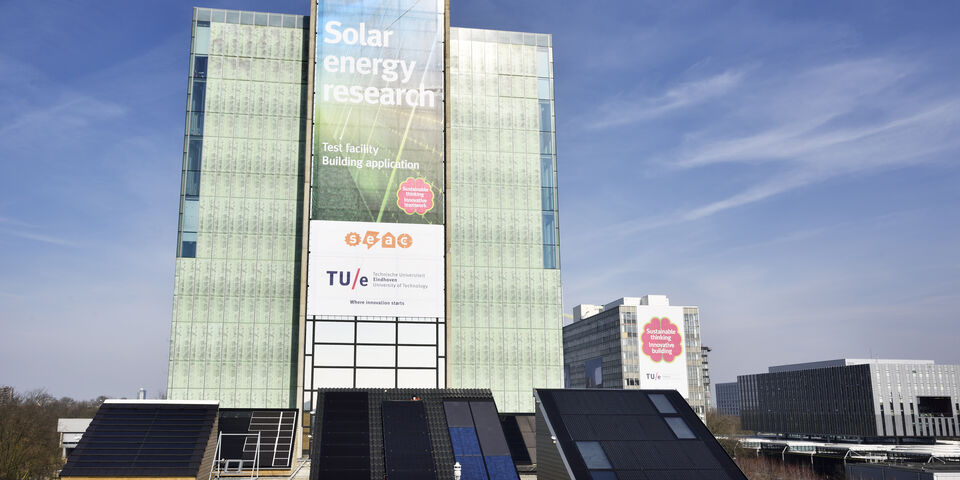SolarBEAT in the sun
The lower section of Vertigo has for two years been the foundation for a test location for so-called building-integrated solar energy: SolarBEAT. Attentive passers-by had long spotted the test buildings already, but recently the test facility has been attracting extra attention. Why so? Well, since last week the lift of Vertigo has been clad with a gigantic printed cloth, intended to counteract the unwanted reflection of sunlight. Later this month the sixth test building of SolarBEAT will become operational.
On an increasing number of Dutch roofs you can see dark-blue or black silicon panels appearing, which convert sunlight into electricity. Usually these PV systems (an abbreviation of the word photovoltaic) are attached to the tiles of sloping roofs as loose modules. However, for the future it is probably more convenient, cheaper, more efficient, or simply more beautiful to integrate the panels into buildings.
Besides, today’s solar cells actually only manage to convert less than one fifth of the sunlight into electricity, and the remainder into heat. This residual heat can in principle be used to provide a house with hot water, by cooling the hot solar panels – which can heat up to as many as eighty degrees - with water or another liquid. That way you combine solar power and solar heat in one system. Three birds with one stone, you might say, as the cooled solar cells also produce even more electricity than hot cells.
Within SolarBEAT, a joint venture between TU/e and SEAC (Solar Energy Application Center, an initiative of TNO, ECN and branch organization Holland Solar), companies from the solar branch can test their ideas for building-integrated solar energy, both for electricity (PV) and for electricity and heat (photovoltaic thermal, PVT), in a realistic situation. For this purpose six small buildings have been placed on top of Vertigo, five of which with sloping roofs – to mimic the loft of an ordinary Dutch terraced house. Through the application of the cloth to cover the lift shaft of Vertigo, which actually reflected very well indeed thanks to a reflecting foil, the location has thus become even more realistic.
One or more different concepts will be tested on each of the test buildings, whereby the analysis of the measurements is partly in the hands of graduating students, PDEng students or PhD candidates of TU/e and other institutions. There is a considerable contribution in particular from the TU/e Department of Architecture, Building and Planning, in view of the focus on building-integrated technologies.
www.seac.cc/projects/solar-beat/


Discussion